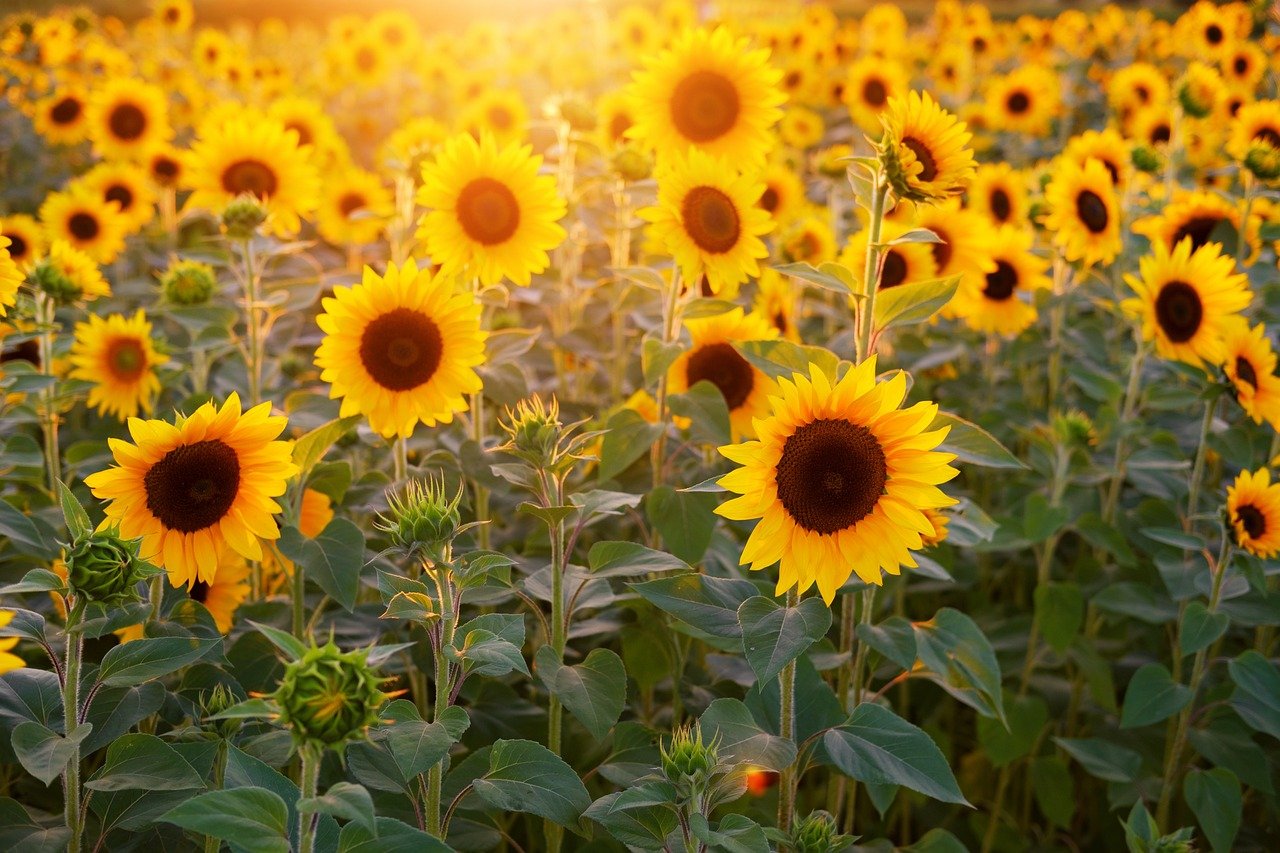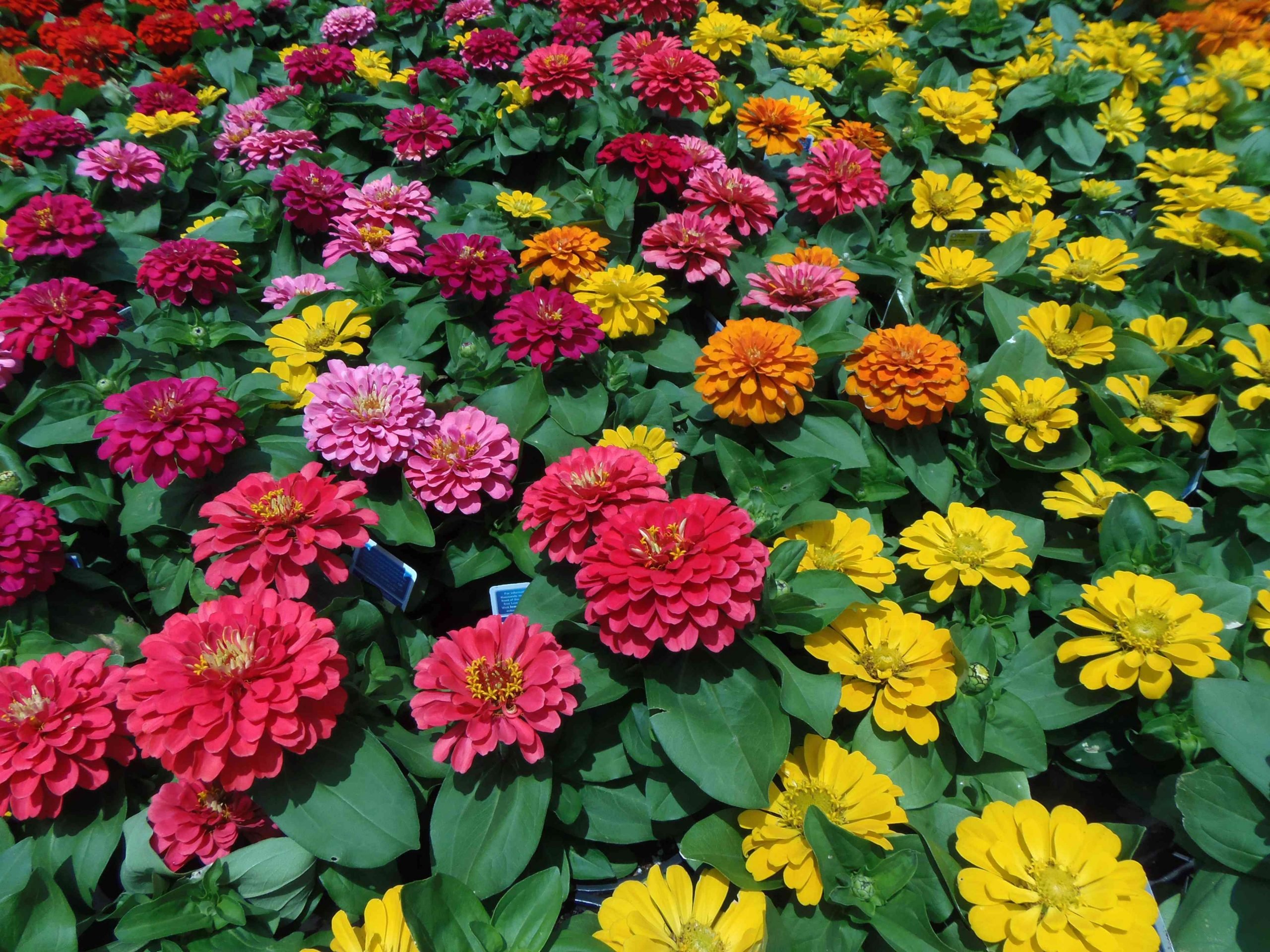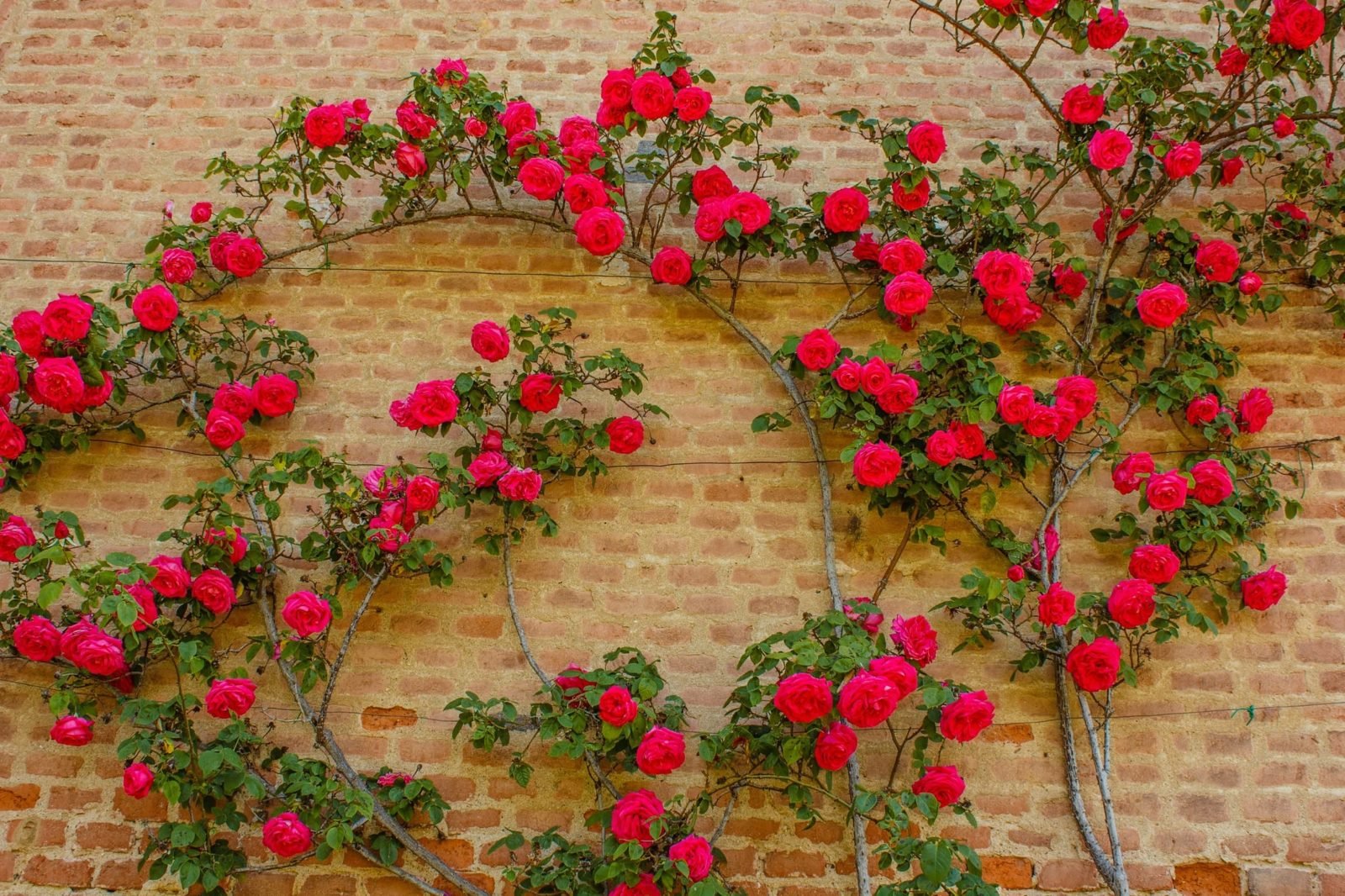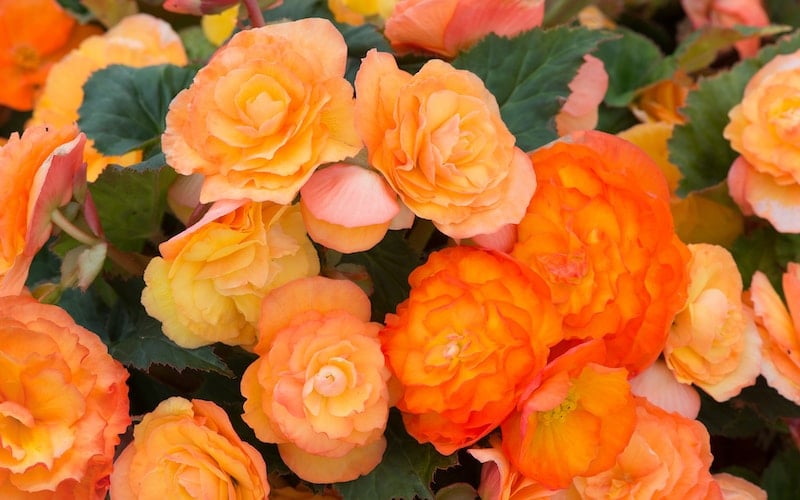12 Small White-Flowering Plants for a Stunning Garden
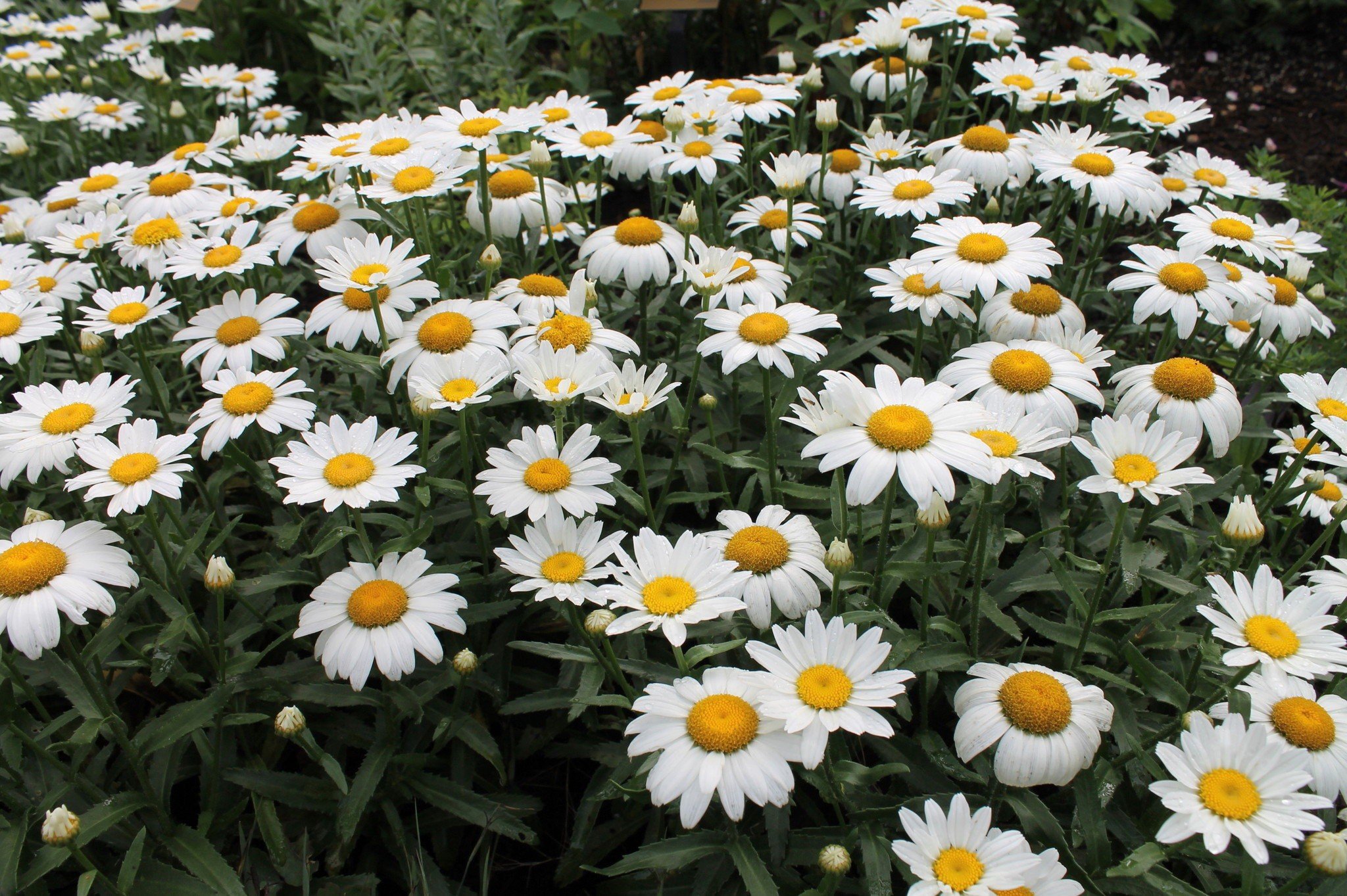
Table of Contents
Plants withsmall white-coloured flowers carry a soothing aura to an outdoor garden. They never lose their freshness, whether planted alone in containers or with flowers of any colour in beds.
Whether you want self-seeding annual plants that only live a year, provide seeds for next year, or perennials that survive in any weather and spruce up your garden with beautiful flowers every year- no more confusion. You will find the 12 most adored and captivating white flowering plants and shrubs that suit hanging baskets and are best for garden beds. Some plants bloom tiny flowers and create a cloud-like shape that attracts everyone’s eye when they glow at night.
Spectacular presence, calming atmosphere, attractive aromas, and bursting colour schemes when blended with other colourful flowers are what you achieve with white flowers. But is it easy to choose them? Let’s find out.
1. Lily of The Valley
Looking for a shrub? This plant (called Convallaria majalis) features showy clusters of bell-shaped white flowers that dangle from beautiful arching branches. The amazing Lily of the Valley grows bulb-like, effortlessly sophisticated white flowers and produces a wonderful scent.
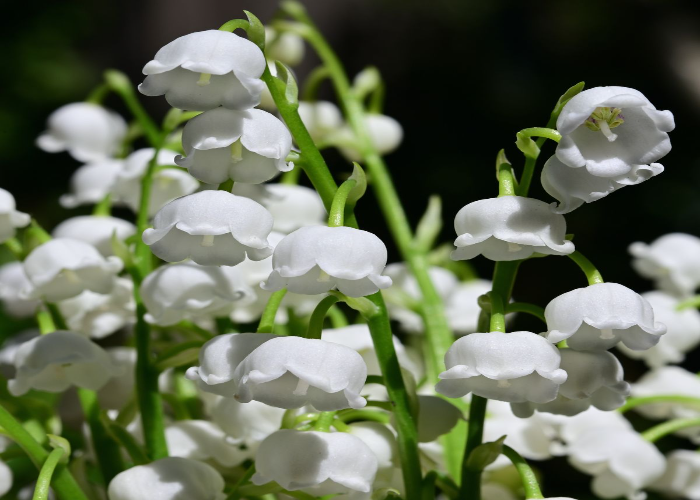
Where To Plant:
- Gardens are the best place to have these ground-covering plants.
- Their horizontal growing habit makes an excellent ground cover in shady spots because of their horizontal growth.
Growing condition: These shrubs grow well in shady conditions, bloom in late winter, and keep the garden atmosphere pleasant with a sweet lemon-like natural scent.
Caring Tip: This beautiful and aromatic perennial (a plant with a lifespan of more than two years) has flowers that are also toxic.
2. Mock Orange
Also known as Philadelphus coronarius, Mock Orange is a deciduous shrub (that usually sheds its leaves in a year) that has a true orange-like appearance, white flowers, and divine aroma. They have arching branches with unique suckering growth patterns that grow 10-12 feet. They thrive in late spring and early summer.
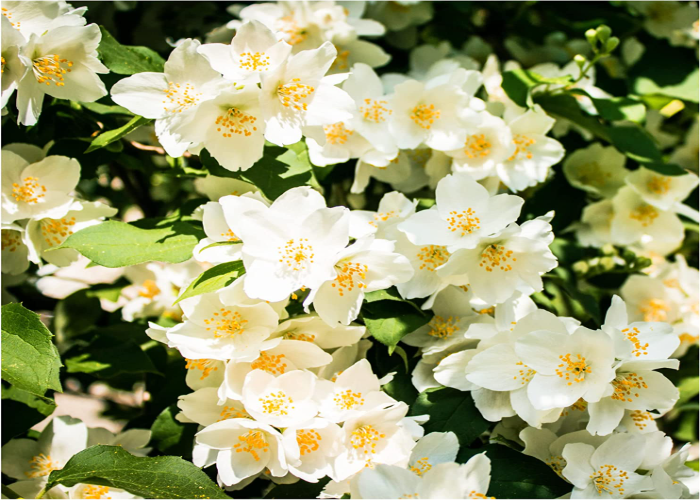
Where To Plant:
- The Mock Orange is often grown as a hedge plant in the UK.
- The white flowers’ spiritual aroma makes them an apt choice for gardens.
Growing condition: There are about 60 species of Mock Oranges, and most of them grow well in full sun and moist but well-drained soil.
Caring Tips:
- You shouldn’t plant this citrusy fragrant flower in wet soils or heavy shades.
- Prune (Remove spent flowers) as they are done flowering.
3. Clematis
Clematis has around 300 species, and one of these (traveler’s Joy) is native to Britain. Most of these varieties are semi-woody vines with climbing habits. Some of these are grown as herbaceous perennials (a herb that grows year after year), while others as hedge shrubs.
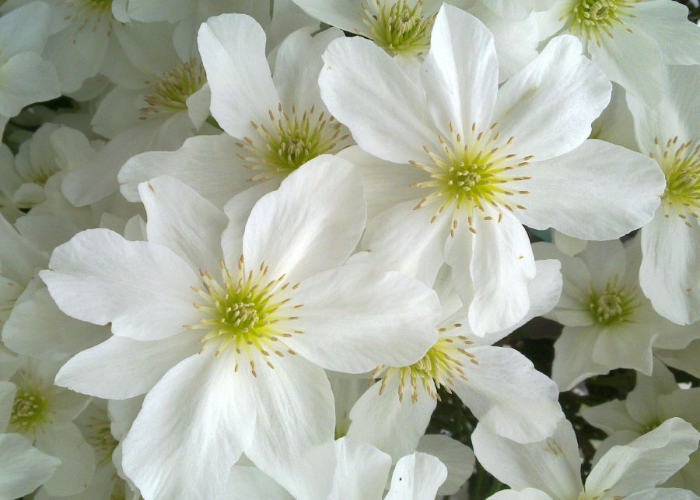
Where To Plant:
- These look magnificent when placed in an open space such as a garden or also over unattractive shrubs to spruce up them.
- They also make a doorway a captivating and pleasant-smelling place.
Growing condition: Place them in well-drained soil, a sunny or sheltered spot, and have white flowers full of lovely smell in the winter.
Caring Tip: It is a self-seeding and naturalizing shrub that can grow even in non-native environments, so you should do some deadheading before they shed seeds.
4. Hydrangea
These are also called Hortensia and are available in more than 75 species of flower plants, most of which create a round bowling ball-like shape. Some make an even greater circular appearance. Hydrangea is a shrub that blooms for months with cream-white flowers in clusters.
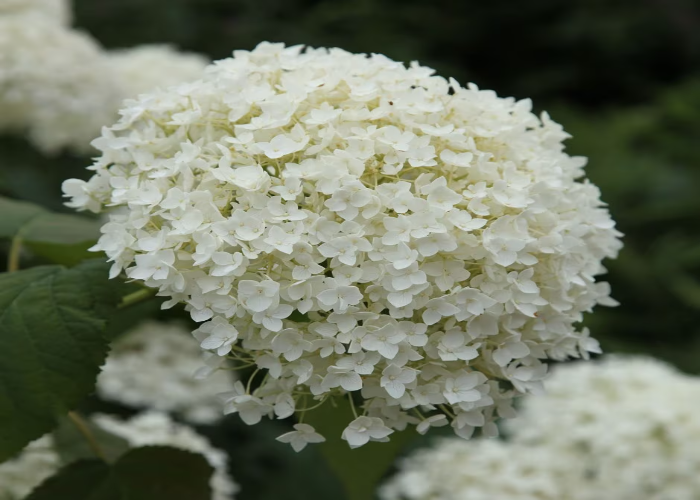
Where To Plant:
- This gorgeous shrub will make a garden look more magnificent with its nice-looking white flowers.
- They can also be decorated in vases using tips.
Growing condition: This adorable plant flourishes in well-drained, moist soil that loves to be in partial shade but can also grow in full sun.
Caring Tips: Ensure to keep them at a temperature of around 18 degrees C to help the plant grow buds.
5. Phlox
This one requires minimal care because it is significantly pest-free and disease-resistant. Consequently, these plants will last years in your garden. Wide varieties of such plants are herbaceous borders and fit in cottage gardens. Phlox is a long flowering plant (which produce flowers for a longer time) with a heavenly aroma.
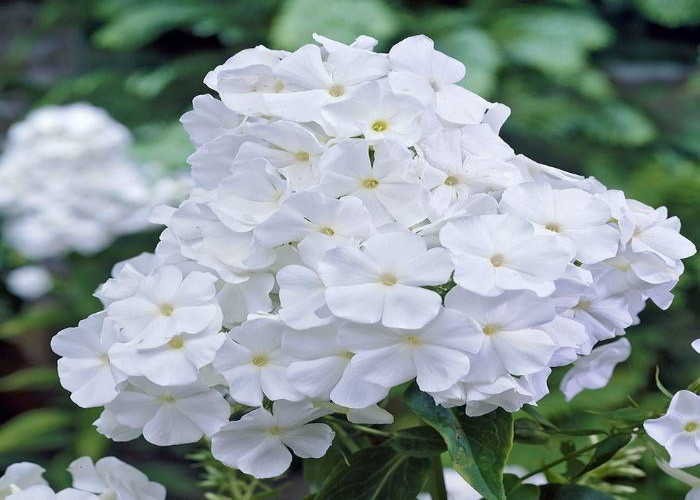
Where To Plant: Numerous varieties are perennials; some are annuals and have different growing habits, including mat-like and upright, which are best for ground cover and gardens.
Growing condition:
- The plant needs full exposure to the sun for 6-8 hours to flower.
- Such Plants must get air circulation, so plant them in an apt space between each.
Caring Tip: They stand out when planted in perennial borders ( combined with other plants with a life span of two years). However, Tall phlox are susceptible to ‘powdery mildew,’ a fungal disease. Choose a pest-resistant variety.
6. Star Jasmine
Star Jasmine has small white starry flowers, and If you love vining plants, Bob’s your uncle. Also known as Trachelospermum jasminoides, it is one of the flowers with the strongest fragrance. With proper care, it can grow up to 6 feet with brown stems and glossy leaves with star-shaped creamy white flowers.
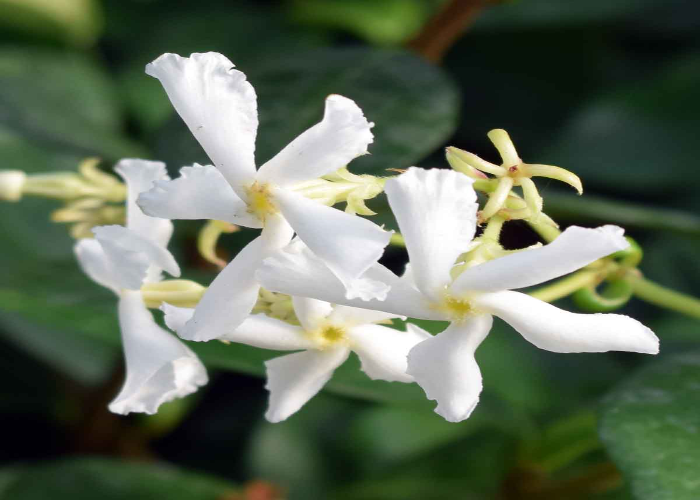
Where To Plant: It is often grown in hanging baskets, decks, and patios because of its lovely fragrance.
Growing condition:
- It requires full sun but also flourishes in part shade.
- When growing in containers, use moist and well-drained potting mix.
Caring Tip: Choose plant types that can survive in the UK climate, such as Trachelospermum jasminoides or common jasmine. Bring indoors in colder temperatures to overwinter.
7. Sweet Alyssum
This annual flower (one year’s lifespan) emits a pleasant scent that attracts pollinators. Its cute little white flowers look beautiful when trailing from hanging baskets. Their lovely cascading white flowers are what they are adored for. They keep blooming from spring to summer and fall.
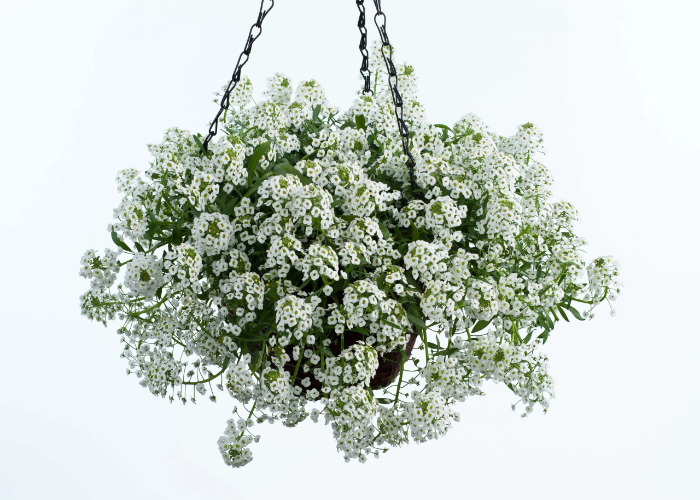
Where To Plant:
- Hanging baskets and containers make them look so beautiful.
- They also make a garden more captivating when used as a ground cover.
Growing condition:
- They love to flourish in part sun and can handle a light frost.
- It needs soil that is rich with nutrients and well-drained with medium moisture.
Caring Tip: Keep it safe in scorching hot weather because it loves cooler weather more. It is better to remove it in summer and then replant it as the weather gets a bit cool.
8. Magnolia
Magnolias are shrubs, one of the oldest (100 million years) plant species. These flowers don’t have small flowers; they are famous for their thick white flowers with fruit-like aromas. They bloom in spring and summer with milky white tepals.
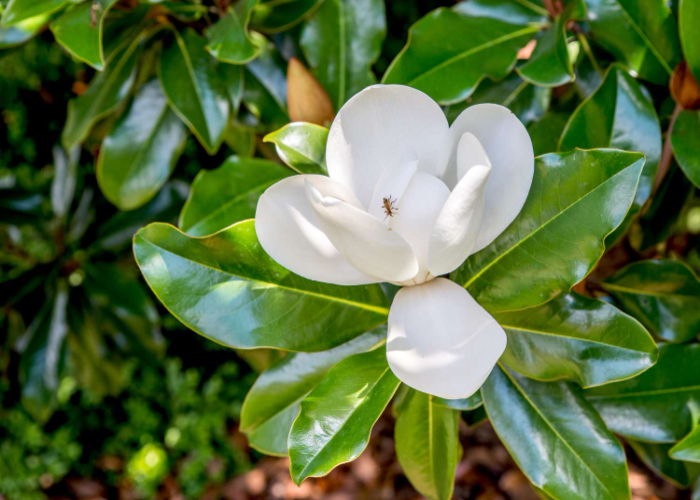
Where To Plant: These white flowers invite pollinators with their powerful scent, making them ideal for gardens. However, smaller varieties of Magnolias grow well in pots.
Growing condition:
- These scented blossoms require full to part shade to flourish.
- They also need enriched, moist, well-drained soil and plenty of water.
Caring Tip: It needs frost protection, and also, when it is a growing plant, you need to keep it somewhere sheltered from winds.
9. Daffodil
These Bulb-like white flowers with trumpet-like centres are pretty eye-catching. Cherry-nodding heads of these flowers make the spring complete. They are also found in bright yellow, but the white starry blossoms are perfect for someone wanting to add horn-shaped flowers to their collection.
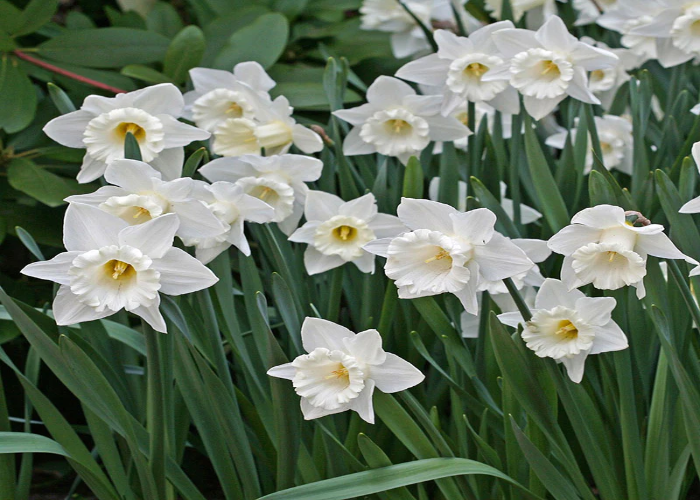
Where To Plant:
- Plant them with other shrubs in the garden to create a contrast.
- They also will give a wonderful punch of white to your border plants.
Growing condition:
- Daffodils love the sun and can even flourish in part shade.
- They require soil with medium moisture and is well-drained.
Caring Tip: Do overhead after they are done flowering but let them die on their own so that they provide enough to the bulbs for next year’s growth.
10. Snowdrop Anemone
Snowdrop Anemone opens with beautiful white flowers in summer and stays blooming till autumn. It is native to the UK. It also has many species, some of which have tall, wiry stems that give birth to white cup-shaped flowers. People often call them Windflowers because their delicate stems dangle even with the slightest breeze.
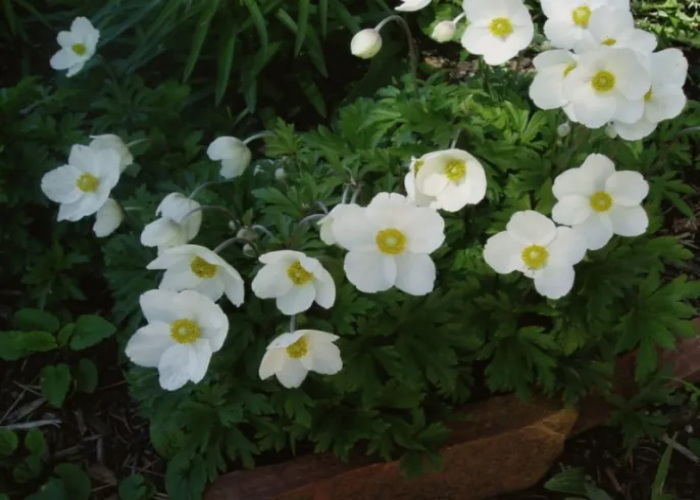
Where To Plant: Due to their dangling habit, these plants look fantastic in pots and hanging baskets.
Growing condition:
- They grow well in shade but also will bloom if you put them in a sunny spot.
- Dry soil can not stop them from flourishing well.
Caring Tip: If you do not water them regularly, they will die, but also ensure to cut the leaves if they are blackened due to lack of water.
11. Viburnum
Viburnum is a shrub with numerous varieties, and most tend to grow slowly. It has a round-shaped white cluster of white flowers. It is one of the most fragrant plants with white flowers in the universe. These blooms stay flourished from spring to summer.
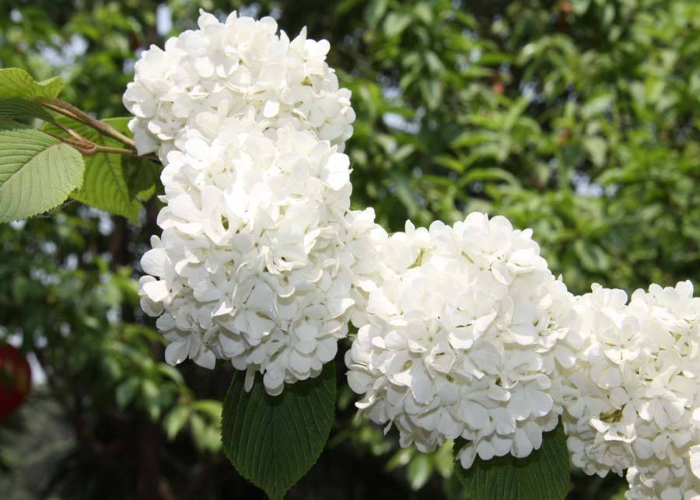
Where To Plant:
- These wildlife-friendly shrubs are ideal for backyard gardens because they grow berries that fliers love to feast on.
- It is also grown as a hedge.
Growing condition:
- These plants with fragrant flowers need full to part shade.
- They also prefer flourishing in medium moisture, slightly acidic, and well-drained soil.
Caring Tips: Do not let them dry, and water them well.
12. Shasta Daisy
Shasta Daisy is a timeless perennial. There is not any white plant that can take its supremacy. They are also available in smaller and taller varieties. These striking plants have pure white flowers like daisies, which have a special place in our hearts. The smaller Shasta Daisy variety is awe-inspiring.
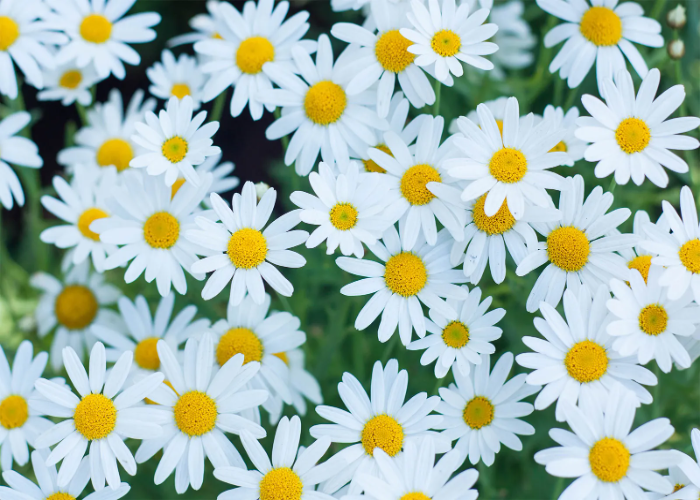
Where To Plant: They need shelter from frost. It is better to grow them indoors for about eight weeks, and as the frost passes, take them out of the pot.
Growing condition:
- Shasta Daisy loves full sun to grow, and well-drained soil is their favourite.
- Pollinators love these plants, and these plants’ preferred choice is a sunny spot.
Caring Tip: Do not plant them in the fall, or they will be at risk of dying.
Conclusion
We discussed 12 white and small flowers and some large ones above that will make your garden or pots more enchanting. These flower ideas are easy to implement with our helpful tips, making your worries even less.
Some of these are shrubs, while others have trailing and dangling habits. Many were filled with aromas that can drive your mood. We have presented the best white-coloured flowered we had shortlisted after research.
It is up to you to now! We hope you make an informed decision according to these suggestions and your preferences.
Have fun planting white blooms in your garden, and share your thoughts afterwards.

